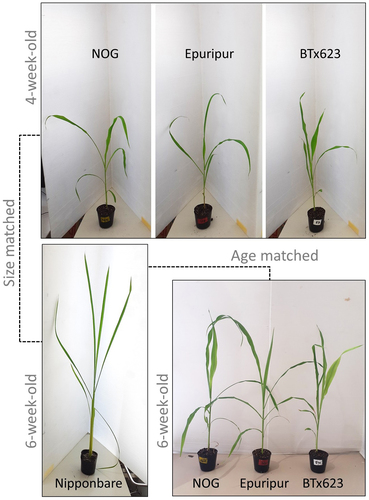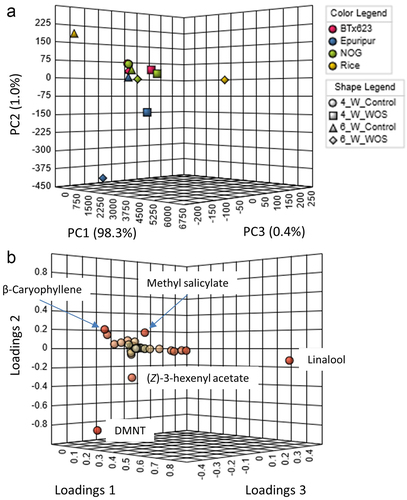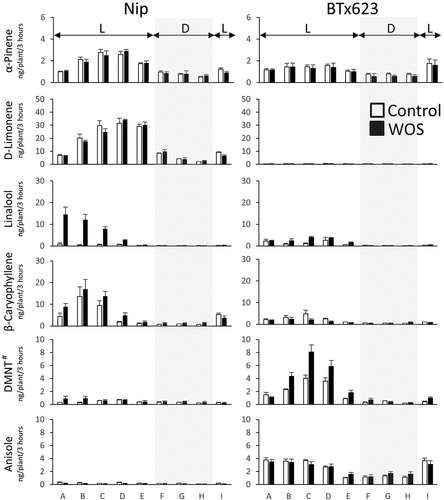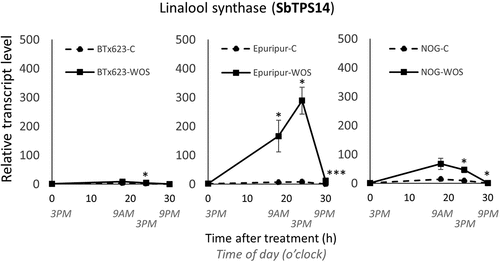Figures & data
Figure 1. Visual comparison of sorghum and rice plants used in experiments.

Figure 2. Comparison of sorghum and rice volatile profiles.

Figure 3. Accumulation of major VOCs in headspace of sorghum and rice.

Figure 4. Principal component analysis (PCA) of VOCs in headspace of sorghum and rice.

Figure 5. Diurnal profiles of headspace VOCs released from C3 rice (Nipponbare) and C4 sorghum (BTx623).

Figure 6. Expression analysis of putative sorghum linalool synthase SbTPS14.

